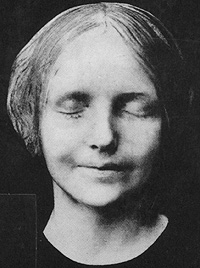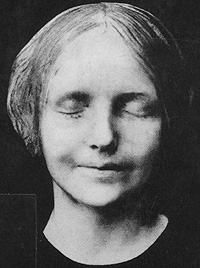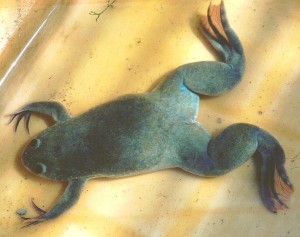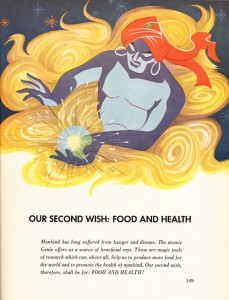 In 19th Century Paris, just as with any other time in Paris, there were suicides. In Paris, the Seine was a favourite, at a time when most could not swim the large river was a simple death sentence. Bodies would often drift up onto the banks of the river where they were then put into the care of the authorities. In the 19th Century, they had a special method for identifying the damp deceased. An exhibition.
In 19th Century Paris, just as with any other time in Paris, there were suicides. In Paris, the Seine was a favourite, at a time when most could not swim the large river was a simple death sentence. Bodies would often drift up onto the banks of the river where they were then put into the care of the authorities. In the 19th Century, they had a special method for identifying the damp deceased. An exhibition.
A cooled room was set up and up to 14 bodies placed within it. At one end of the room was a large window, any passer-by could peer inside and, hopefully, identify one of them. Parisians and travelers alike were fixated by the chilling sight, neatly arranged bodies only slightly too still to be sleeping. In the volume ‘Unknown Paris’ it was noted that:
“There is not a single window in Paris which attracts more onlookers than this.”
In the 1880’s there was one particular body. She was dragged from the Seine with not a scratch or spot. Suicide they said. The body was presented behind a window and the people peered at the restful smile which sat across the features. No name came and the body rotted, it was placed in an unmarked grave, but the smile remained. An unknown pathologist had been so taken by the beauty that they decided to take the beauty. A plaster cast mold of the face was taken and a death mask made, an object to preserve the image of one deceased. Through odd contrivances and circumstances now lost to time the mask got out and garnered a following. The face became famous.
L’Inconnue de la Seine they called her, it means ‘the unknown woman of the Seine.’ Somehow copies were made of the mask and then more were desired. Photographs of the original were taken and masks made based upon the film negatives By the 1900’s factories in Germany and France were producing volumes of the corpse’s countenance. It became a popular fixture on the walls of artists, who in turn were inspired by her. Her enigmatic smile was compared to that of the Mona Lisa and many speculated on what could have caused the girl such happiness as her end approached. Scholar Hans Hesse said:
“I am told that a whole generation of German girls modeled their looks on her.”

One of many masks
Indeed she became a lasting style icon until she was partially replaced by the slightly livelier actresses of silent cinema. Her face still remains though, in fact you may have seen it, perhaps even kissed it.
In the 1950’s two men, one Norwegian and the other American, met at an anaesthetics conference. The American was Peter Safar, a pioneer of mouth-to-mouth resuscitation. He believed that it could be a life saving tool, and he believed that with the right tools, members of the public could learn to use it. To his disappointment there was a lack of useful tools available then, to practice one would need a cadaver and time to practice. This meant that the public, who often lacked corpses, couldn’t learn this life-saving technique, the plan was dead in the water. So Peter Safar wanted to change that, and the Norwegian fellow was going to help him, by arranging for him to meet with Armund Laerdal, a toy maker.
Laerdal was asked to make a life-sized doll upon which members of the public could practice mouth-to-mouth resuscitation. Laerdal took to the task enthusiastically, he had once rescued his two-year old son and cleared his airways, he wanted other lives to be saved in that same manner and saw that a large doll could do that. In designing it he had many choices. He chose for it to be female because he felt men would be more reluctant to kiss a male doll whereas both genders would be fine kissing a female one. Then he needed a face, he knew the tale of L’Inconnue de la Seine and felt using her face would be a fitting tribute. He also hoped that using an attractive face would help encourage those using the doll. Then it was named Anne, and so in 1960 ‘Resusci Anne’ was born, also known as ‘CPR Annie’ in the US.
The doll was a breath of fresh air, and initiated widespread change and revolutionised mouth-to-mouth resuscitation training for both medical professionals and the public. Later it was updated to include a compressible chest for the practice of cardiopulmonary resuscitation, or CPR as it is better known.
While not as authentic as a genuine cadaver ‘Resusci Anne’ was definitely preferable. there have been variations since, using composites of many faces, ‘Resusci Anne’ alone used one distilled visage, L’Inconnue de la Seine. One visage which has helped save tens of thousands of lives. So if you wish to put a name to this face, perhaps Anne will suffice. Whatever her name, her face has inspired many and has one more distinction.
L’Inconnue de la Seine is, ‘the most kissed face of all time.’
Further Reading



